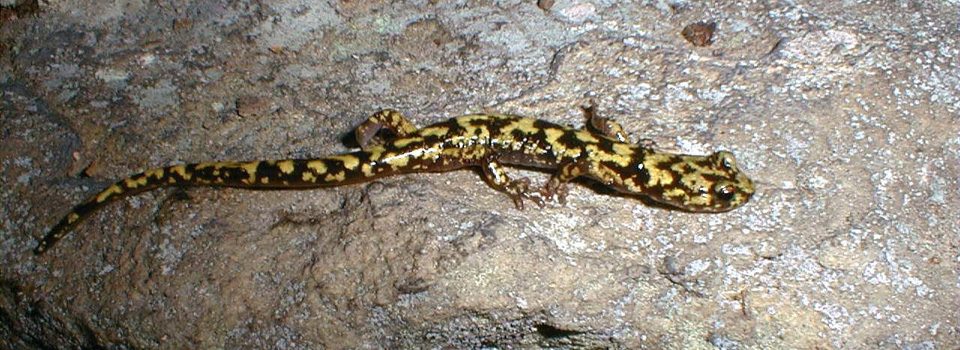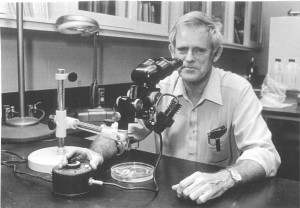
Herpetology

John S. “Jack” Mecham
1956-1965
BS, University of Texas
MS, University of Florida
PhD, University of Texas
The first official herpetologist at Auburn University was Jack Mecham who was hired away from the University of Tulsa by F.S. “Red” Arant, the iconic head of the Department of Zoology and Entomology. Jack was hired as part of the teaching staff and, in his herpetology course, recognized the value of integrating collections-oriented activities as part of the lab experience. Jack was on staff from 1956 to 1965, inherited a collection of about 530 specimens and built it to about 4,400 specimens. Jack was one of the original occupants of Funchess Hall when it was newly built, having designed the research space that housed the herpetological collections in what is now Funchess 301.
Despite being shackled with a heavy teaching load, Jack developed a research program of exceptional merit that was focused on introgressive hybridization of sympatric congeners. One major project involved examination of Green Treefrogs (Hyla cinerea) and Barking Treefrogs (Hyla gratiosa) at a pond in the complex of ponds created north of campus for fisheries research. Because these ponds had managed margins on which trees and shrubs were not allowed to grow, male Green Treefrogs, that normally call from vegetation along aquatic margins, called from shallow water, where males of Barking Treefrogs call regardless of whether the margins are managed. In this setting, female Barking Treefrogs occasionally mated with Green Treefrog males, creating viable hybrids. Jack recognized the importance of this pond system, performed the genetic detective work to document the asymmetric introgression, and published the study in a widely-cited paper (Ecology 14:445-457). His research interests also included the diversification of newts (Notophthalmus), an interest that resulted in the publication of species accounts for the Catalog of North American Amphibians and Reptiles and an examination of the possibility that the broken-striped newt might result from introgression between Notophthalmus perstriatus and N. viridescens louisianensis.
Jack left Auburn in 1965 to take a position at Texas Tech University, where he finished his career, continuing work on introgression by examining the Leopard Frog (Lithobates sphenocephalus) complex. While at Auburn he completed one known graduate student, Andrew Wallace Hayes.
Students Advised
| Hayes, Andrew Wallace (1964, MS) | Hybridization and sexual differentiation in four southeastern treefrogs |